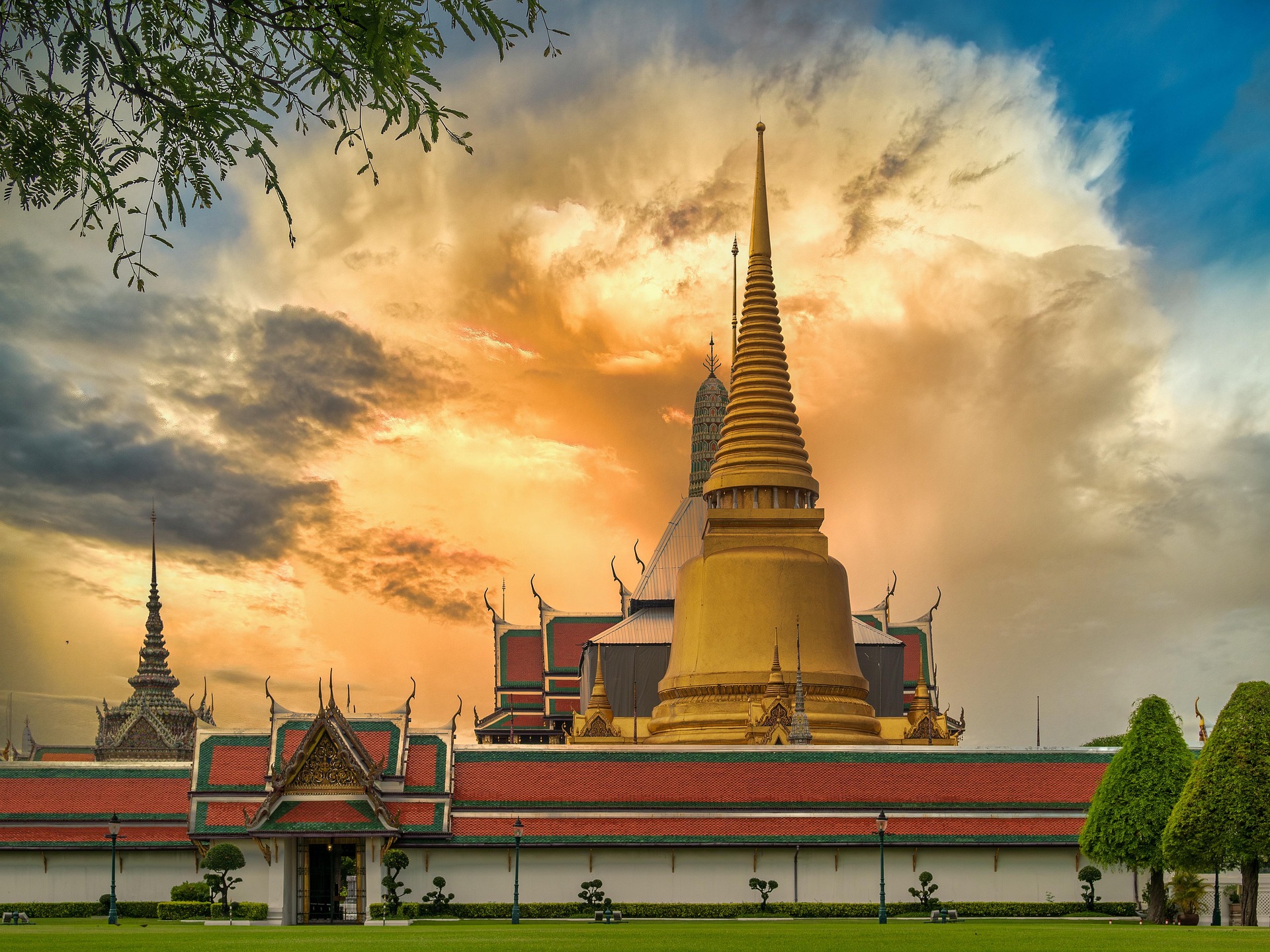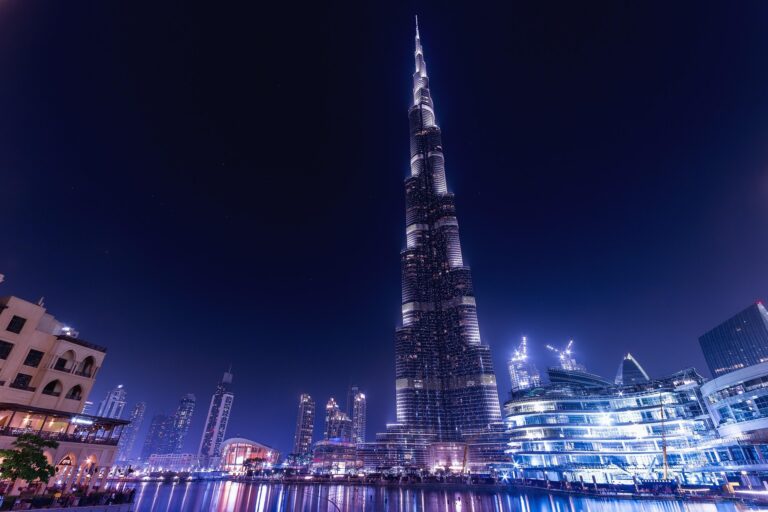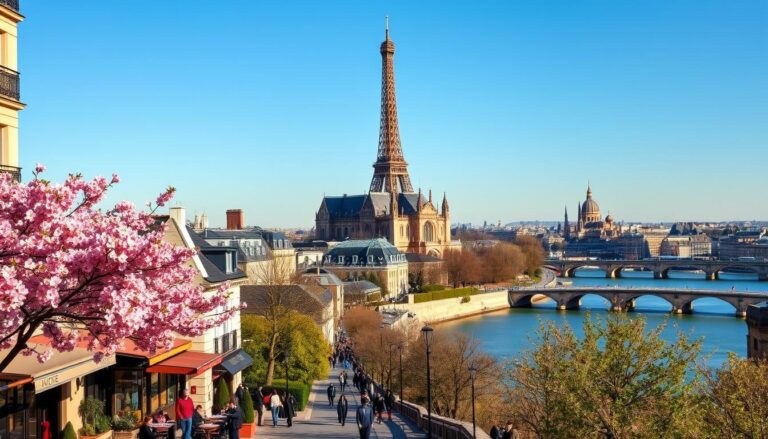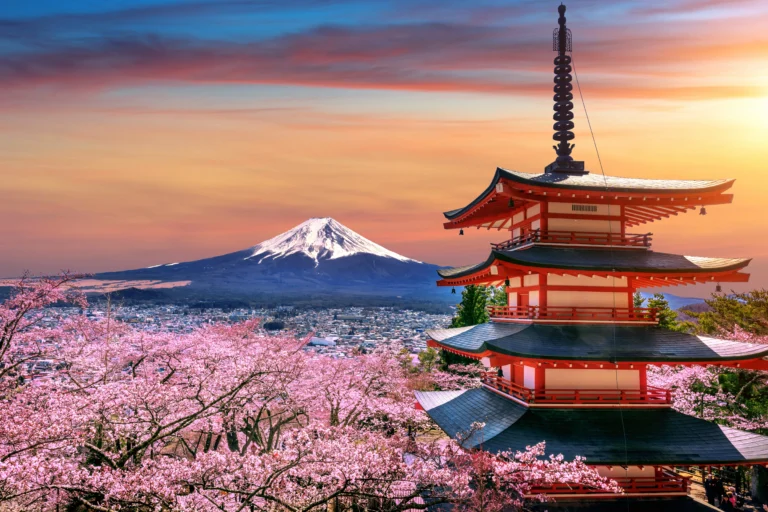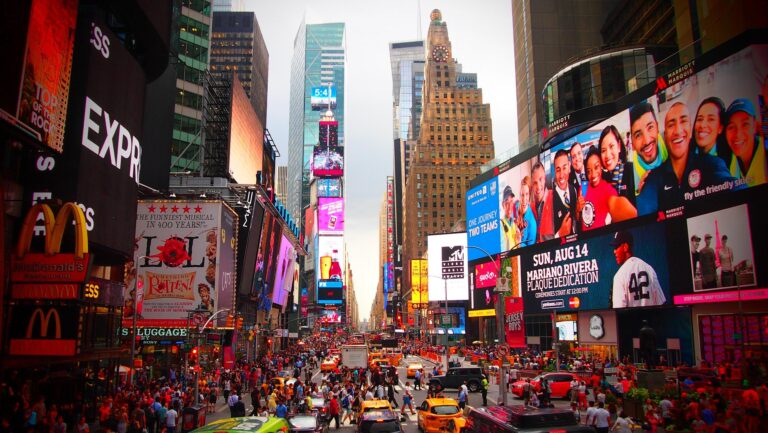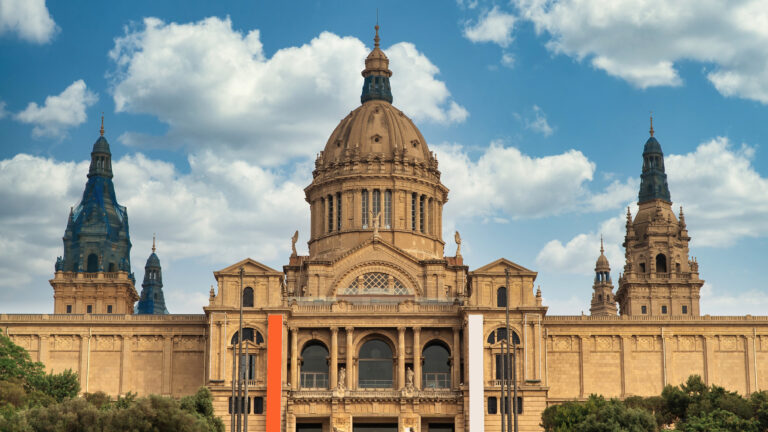Explore Bangkok at the Ideal Time
Welcome to our comprehensive Bangkok travel guide, where we’ll help you navigate the vibrant streets of Thailand’s capital city. Bangkok is a treasure trove of rich history, delicious cuisine, and lively atmosphere, making it an ideal destination for travelers.

Whether you’re a seasoned traveler or planning your first trip, understanding the ideal times to visit Bangkok is crucial to making the most of your experience. In this article, we’ll explore the best times to indulge in Bangkok’s cultural delights and avoid the crowds.
By planning your trip during the optimal period, you’ll be able to fully immerse yourself in Bangkok tourism and create unforgettable memories.
Bangkok: A City of Contrasts and Endless Exploration
Bangkok, the capital of Thailand, is a city of contrasts where ancient temples stand alongside modern skyscrapers. This vibrant metropolis is a treasure trove of cultural heritage, culinary delights, and exciting experiences that cater to all kinds of travelers. Whether you’re interested in history, food, or entertainment, Bangkok has something for everyone.
What Makes Bangkok a Must-Visit Destination
Bangkok is a must-visit destination for any traveler. The city boasts world-class attractions like the Grand Palace, Wat Arun, and Wat Pho, which showcase its rich cultural heritage. Additionally, Bangkok’s bustling streets, night markets, and shopping malls offer a unique shopping experience. Visitors can also indulge in the city’s renowned street food, which is both delicious and affordable.
Understanding Bangkok’s Unique Appeal
Bangkok’s unique appeal lies in its ability to blend tradition with modernity. The city’s cultural landmarks, such as the Grand Palace and Wat Phra Kaew, are a testament to its rich history. At the same time, Bangkok’s modern amenities, including luxury hotels and shopping malls, make it a comfortable and convenient destination for travelers. This blend of old and new is what makes Bangkok a truly unforgettable experience.
Climate Overview: Bangkok’s Three Distinct Seasons
Bangkok’s climate is a complex mix of three distinct seasons that significantly impact the travel experience. Understanding these seasons is key to planning a comfortable and enjoyable trip.
Hot Season: March to June
The hot season in Bangkok, spanning from March to June, is characterized by high temperatures and humidity. Temperatures often soar above 35°C (95°F), making it essential for visitors to stay hydrated and seek shade when needed.
Rainy Season: July to October
From July to October, Bangkok experiences its rainy season. While the rain brings relief from the heat, it can also cause flooding and disruptions. Visitors should be prepared for sudden downpours and potential traffic congestion.
Cool Season: November to February
The cool season, from November to February, is generally considered the best time to visit Bangkok. The weather is pleasant, with temperatures ranging from 20-30°C (68-86°F), making it ideal for sightseeing and outdoor activities.
| Season | Months | Characteristics |
|---|---|---|
| Hot | March – June | High temperatures, high humidity |
| Rainy | July – October | Frequent rain, potential flooding |
| Cool | November – February | Pleasant temperatures, minimal rainfall |
Best Time to Visit BANGKOK: Season by Season Analysis
Bangkok’s climate is characterized by three distinct seasons, each offering a unique experience for visitors. Understanding these seasons is crucial for planning a trip that meets your preferences, whether you’re looking for a cool and crowded experience or a more relaxed atmosphere.
Peak Tourist Season: November to February
The peak tourist season, from November to February, is the coolest and most popular time to visit Bangkok. Temperatures are pleasant, ranging from 20-30°C (68-86°F), making it ideal for sightseeing and outdoor activities. This period is perfect for those who enjoy cooler weather and don’t mind the crowds. Popular events and festivals during this time attract visitors from around the world.
Shoulder Seasons: Benefits of Visiting in March and October
The shoulder seasons, March and October, offer a good balance between weather and crowd levels. March is still relatively cool after the winter, while October marks the end of the rainy season, leading into the cool season. These months are ideal for travelers who prefer fewer tourists and lower prices compared to the peak season. The weather remains relatively pleasant, making it suitable for exploring the city’s attractions.
Low Season: Finding Value in the Rainy Months
The low season, which includes the rainy months from July to October, can be a great time to find deals and discounts on accommodations and tourist services. While the rain can be heavy at times, it often comes in short bursts, leaving plenty of time for sightseeing. Visiting during the low season can be beneficial for budget-conscious travelers who are flexible with their plans and can enjoy the city’s indoor attractions and cultural experiences without the crowds.
Exploring Bangkok During the Cool Season (November-February)
Bangkok’s cool season, spanning from November to February, is a treat for travelers seeking pleasant weather and exciting activities. The city’s atmosphere becomes even more vibrant during this period, with comfortable temperatures making it an ideal time to explore its many attractions.
Weather Expectations and Packing Tips
During the cool season, Bangkok experiences relatively mild temperatures, ranging from 20°C to 30°C (68°F to 86°F). While it’s still considered warm by many standards, the humidity is lower, making it feel more comfortable. Visitors should pack light clothing, including long-sleeved shirts and trousers for the cooler mornings and evenings, as well as sun protection for outdoor explorations.
Popular Activities and Attractions
The cool season is an excellent time to enjoy Bangkok’s outdoor attractions, such as taking a boat ride along the Chao Phraya River or exploring the city’s many parks and gardens. Cultural events and festivals are also more frequent during this time, offering a glimpse into Thai traditions and customs. Visitors can enjoy the Loy Krathong festival, which usually takes place in November, releasing floating lanterns onto the river.
Crowd Levels and Accommodation Rates
As the cool season coincides with the peak tourist season, popular areas can get crowded. However, the overall experience remains enjoyable. Accommodation rates tend to be higher during this period, especially around major festivals and holidays. It’s advisable to book accommodations and popular tours in advance to avoid higher last-minute prices and availability issues.
Visiting Bangkok in the Hot Season (March-June)
The hot season in Bangkok, which runs from March to June, offers a unique blend of challenging weather and enriching experiences. During this period, visitors can expect high temperatures and humidity, but with the right preparation, they can enjoy all that Bangkok has to offer.
Managing the Heat: What to Expect
Temperatures during the hot season can soar above 35°C (95°F), with high humidity making it feel even hotter. To manage the heat, it’s essential to stay hydrated by drinking plenty of water and to take breaks in cool, air-conditioned spaces. Visitors should also consider dressing in light, breathable clothing and planning outdoor activities for early morning or late evening when the sun is less intense.
Water-Based Activities and Indoor Attractions
One of the best ways to cool off during Bangkok’s hot season is by enjoying water-based activities. The city’s many pools, water parks, and beaches offer a refreshing escape from the heat. Additionally, Bangkok’s numerous indoor attractions, such as museums, shopping malls, and temples, provide a cool respite and a chance to explore the city’s cultural and historical treasures.
Songkran: Thailand’s Famous Water Festival
The hot season culminates in the Songkran water festival, a traditional Thai New Year celebration that takes place from April 13 to 15. This festive event involves water fights and rituals, symbolizing cleansing and renewal. Visitors can participate in the water festivities, experiencing the local culture and having fun while staying cool.
| Activity | Location | Best Time |
|---|---|---|
| Visit Museums | Various locations | Anytime |
| Enjoy Water Parks | Siam Park City, Safari World | 10am-5pm |
| Explore Shopping Malls | MBK, Siam Paragon | 10am-10pm |
Experiencing Bangkok During the Rainy Season (July-October)
Bangkok’s rainy season transforms the city into a lush oasis, offering a unique experience for visitors. The monsoon months, from July to October, bring significant rainfall, but they also have their own charm.

Monsoon Patterns and Practical Considerations
The monsoon patterns in Bangkok are characterized by heavy rainfall, often in short, intense bursts. Visitors should be prepared for potential flooding in some areas. Practically, it’s wise to pack lightweight rain gear and waterproof footwear. Transportation might be a bit more challenging due to rain-related traffic, so planning ahead is advisable.
Rainy Day Activities and Indoor Attractions
Bangkok has plenty of indoor attractions to explore on rainy days. The city’s museums, such as the National Museum, offer a deep dive into Thai history and culture. Shopping malls like Siam Paragon and MBK are not only great for shopping but also provide entertainment options like cinemas and indoor games.
Benefits of Visiting During the Green Season
Visiting Bangkok during the rainy season has its advantages. The city becomes less crowded, and the lush greenery that follows the rain makes the landscape particularly beautiful. Additionally, many hotels and resorts offer attractive discounts during this period, making it a more budget-friendly time to visit.
Overall, the rainy season in Bangkok can be a great time to experience the city in a different light, with its unique charm and fewer tourists.
Bangkok’s Annual Festivals and Events Calendar
From traditional Thai celebrations to modern international festivals, Bangkok’s events calendar is a treasure trove of experiences. The city’s vibrant cultural scene is reflected in its numerous festivals and events throughout the year, offering visitors a unique glimpse into Thai culture and hospitality.
Traditional Thai Festivals
Bangkok is home to several traditional Thai festivals that are not to be missed. Loy Krathong, for instance, is a beautiful festival where lanterns are released onto rivers and streams, symbolizing the release of negative thoughts. Another significant event is Songkran, Thailand’s New Year water festival, which is celebrated with water fights and rituals to cleanse and renew.
Cultural and Religious Celebrations
The city also hosts various cultural and religious celebrations. Visakha Bucha, a Buddhist holiday commemorating the birth, enlightenment, and death of Buddha, is observed with candlelight processions at temples. Additionally, the Phi Ta Khon (Ghost Festival) in nearby provinces, while not in Bangkok, influences the city’s cultural events, showcasing the rich tapestry of Thai beliefs.
Modern Events and International Festivals
Bangkok is not just about traditional festivals; it also embraces modern events and international festivals. The Bangkok International Film Festival attracts cinema enthusiasts from around the world, showcasing a diverse range of films. Moreover, events like the Bangkok Jazz Festival and various food festivals highlight the city’s cosmopolitan flair.
In conclusion, Bangkok’s annual festivals and events calendar is a reflection of the city’s rich cultural heritage and its openness to modern influences. Whether you’re interested in traditional Thai culture, religious celebrations, or contemporary events, Bangkok has something to offer, making it a fascinating destination to visit at any time of the year.
Seasonal Food Experiences in Bangkok
The flavors of Bangkok change with the seasons, offering a culinary journey that’s as diverse as it is delicious. Bangkok’s street food scene is renowned worldwide, and the city’s culinary delights are heavily influenced by the time of year.
Cool Season Culinary Highlights
During the cool season, from November to February, Bangkok’s culinary scene is filled with hearty dishes and fresh produce. Some highlights include:
- Hot Pot: A communal dining experience where diners cook their choice of ingredients in a simmering pot of flavorful broth.
- Khao Soi: A curried noodle soup that’s a staple in Chiang Mai but also enjoyed in Bangkok during the cooler months.
- Fresh Durian and other seasonal fruits that are at their peak flavor and texture.
Hot Season Refreshments and Specialties
As temperatures soar during the hot season, from March to June, Bangkokians turn to cooling and refreshing dishes to beat the heat. Some popular choices include:
- Som Tam (Papaya Salad): A spicy and sour salad that helps to cut through the richness of other meals.
- Coconut Ice Cream: A sweet treat that provides a cooling respite from the sweltering heat.
- Refreshing Thai Iced Tea and other chilled beverages.
Rainy Season Comfort Foods and Seasonal Fruits
The rainy season, from July to October, brings its own set of comfort foods and seasonal delights. Some favorites include:
- Boat Noodle Soup: A comforting and flavorful soup that’s perfect for a rainy day.
- Khanom Buang (Thai Crepes): Delicate crepes filled with sweet coconut and other fillings.
- Seasonal fruits like Mangosteen and Rambutan, which are at their best during this time.
Bangkok’s culinary landscape is a reflection of its cultural diversity and the changing seasons. Whether you’re enjoying a hot pot during the cool season or sipping on a refreshing drink during the hot season, there’s always something new to try in this vibrant city.
Budget Considerations: When to Find the Best Deals
Planning a trip to Bangkok requires careful consideration of your budget to ensure a stress-free experience. Understanding the fluctuations in pricing throughout the year can help you make the most of your travel funds.
High Season vs. Low Season Pricing
The cost of traveling to Bangkok varies significantly depending on the time of year. During the peak season (November to February), prices for accommodations and tourist attractions tend to be higher due to increased demand. In contrast, the low season (July to October) often brings lower prices, making it an attractive option for budget-conscious travelers.
| Season | Accommodation Prices | Attraction Prices |
|---|---|---|
| Peak Season (Nov-Feb) | Higher | Higher |
| Low Season (Jul-Oct) | Lower | Lower |
Flight Trends from the United States
For travelers from the United States, flight trends can significantly impact the overall cost of the trip. Generally, flights from major U.S. cities to Bangkok are more affordable during the shoulder season (March to April and September to October). Booking flights well in advance can also help secure better rates.

Maximizing Your Bangkok Budget Year-Round
To make the most of your Bangkok budget, consider visiting during the shoulder season when prices are more moderate. Additionally, planning your itinerary to include a mix of free or low-cost activities, such as exploring local markets or visiting temples, can help keep expenses in check. Being mindful of your spending habits and taking advantage of travel deals can enhance your overall experience.
- Research and book accommodations and flights in advance to secure better rates.
- Explore local markets and street food for affordable dining options.
- Take advantage of free or low-cost attractions like temples and public parks.
Health and Safety Tips for Different Seasons
Understanding the health implications of Bangkok’s seasons is crucial for a safe and enjoyable trip. Bangkok’s climate varies significantly throughout the year, impacting the health and safety of visitors.
Cool Season Health Considerations
During the cool season, from November to February, Bangkok experiences relatively milder temperatures. However, this period can still pose health risks, particularly for those not accustomed to cooler temperatures. Respiratory issues can be exacerbated, and visitors should be prepared with appropriate clothing.
Hot Season Precautions and Heat Safety
The hot season, spanning from March to June, is characterized by high temperatures and humidity. It’s essential to stay hydrated by drinking plenty of water and to avoid prolonged exposure to the sun. Heatstroke is a significant risk during this period.
| Health Risk | Precaution |
|---|---|
| Dehydration | Drink at least 2 liters of water per day |
| Heatstroke | Avoid outdoor activities during peak sun hours |
Rainy Season Health Concerns and Preparation
The rainy season, from July to October, brings its own set of health concerns, including an increased risk of mosquito-borne illnesses like dengue fever. Visitors should take precautions against mosquito bites and be aware of the risk of flooding.
Cultural Etiquette and Local Customs Year-Round
Bangkok’s vibrant culture is deeply rooted in its customs and etiquette, which visitors should strive to understand and respect. The city’s cultural landscape is a blend of traditional and modern practices, making it essential for travelers to be aware of the local customs to enhance their experience.
Respecting Sacred Sites and Temples
When visiting temples or sacred sites, it’s crucial to dress modestly and remove your shoes when required. Showing respect to these sites and the monks is a sign of cultural appreciation. Avoid taking inappropriate photos or touching artifacts, as these actions can be considered disrespectful.
Interacting with Locals: Do’s and Don’ts
Interacting with locals in Bangkok can be a rewarding experience if done correctly. Smiling and being polite goes a long way. Simple gestures like using your hands correctly when eating or giving/receiving something with both hands can make a significant difference. Avoid public displays of affection, as Thai culture tends to be conservative.
Seasonal Cultural Sensitivities
Bangkok’s cultural sensitivities can vary with the seasons, particularly during festivals like Songkran. Being aware of these cultural events and respecting local traditions is key to a harmonious visit. For instance, during Songkran, water splashing is a significant part of the celebration, and visitors are encouraged to participate respectfully.
Conclusion: Planning Your Perfect Bangkok Adventure
With its rich cultural heritage, vibrant street life, and delicious cuisine, Bangkok is a destination that has something for everyone. When planning a trip to Bangkok, consider the best time to visit, cultural etiquette, and budget considerations to make the most of your experience.
By understanding the city’s climate and seasonal events, you can tailor your itinerary to suit your preferences. Whether you’re looking for a relaxing getaway or an action-packed adventure, Bangkok travel tips can help you navigate the city’s hidden gems and popular attractions.
From trying local street food to exploring ancient temples, Bangkok offers a wealth of experiences that will leave you with lifelong memories. With careful planning and insider knowledge, you can create a truly unforgettable journey to this captivating city.

